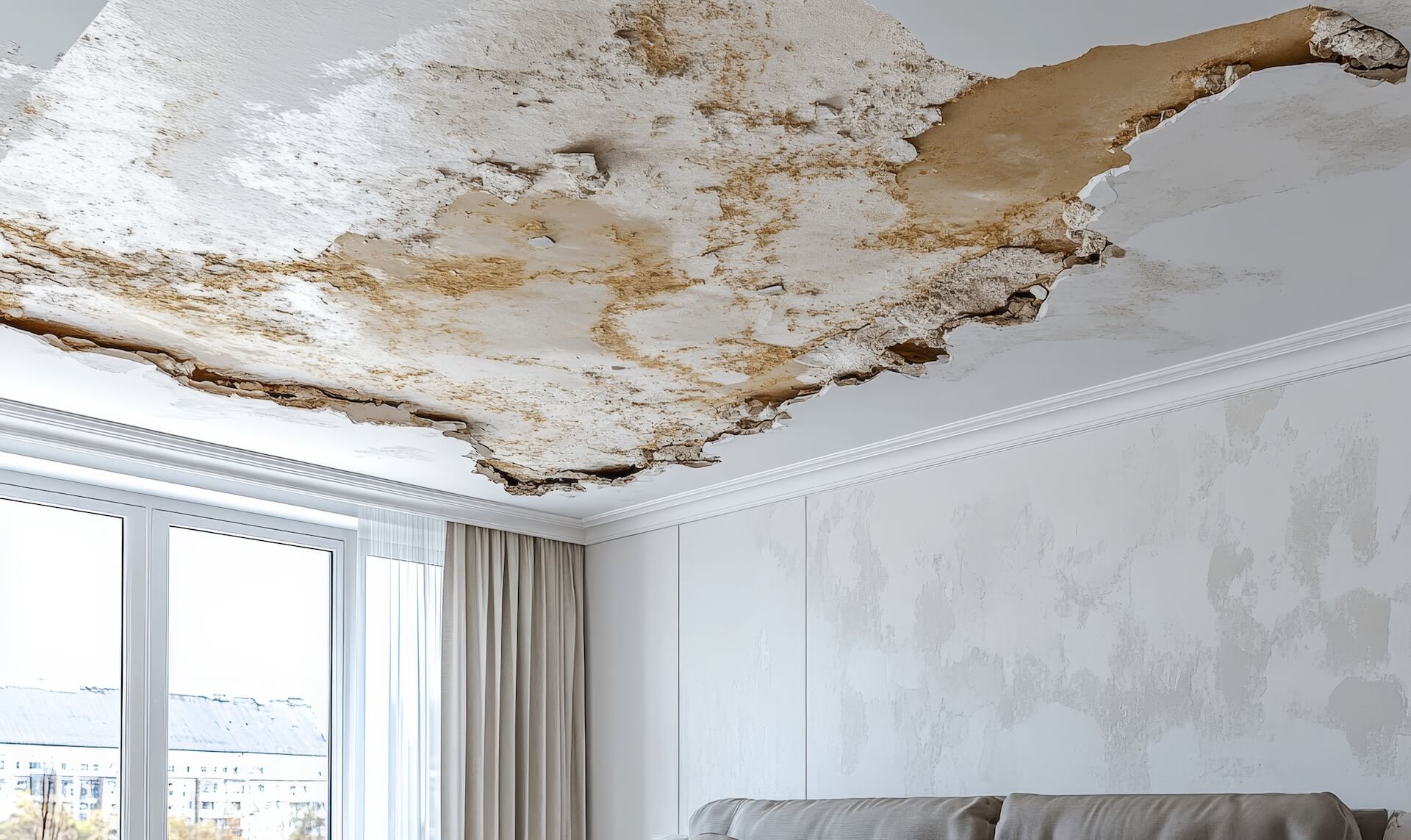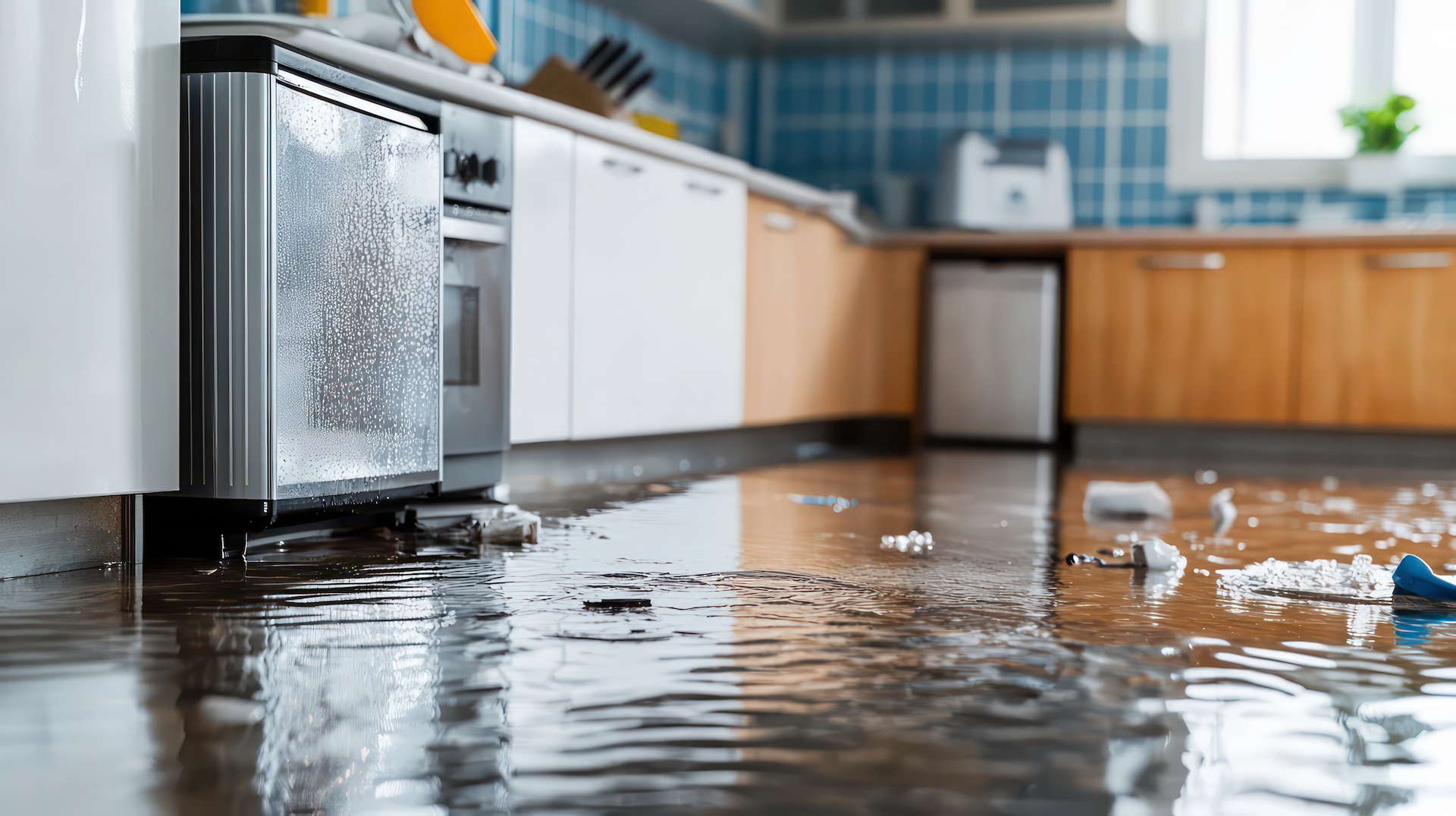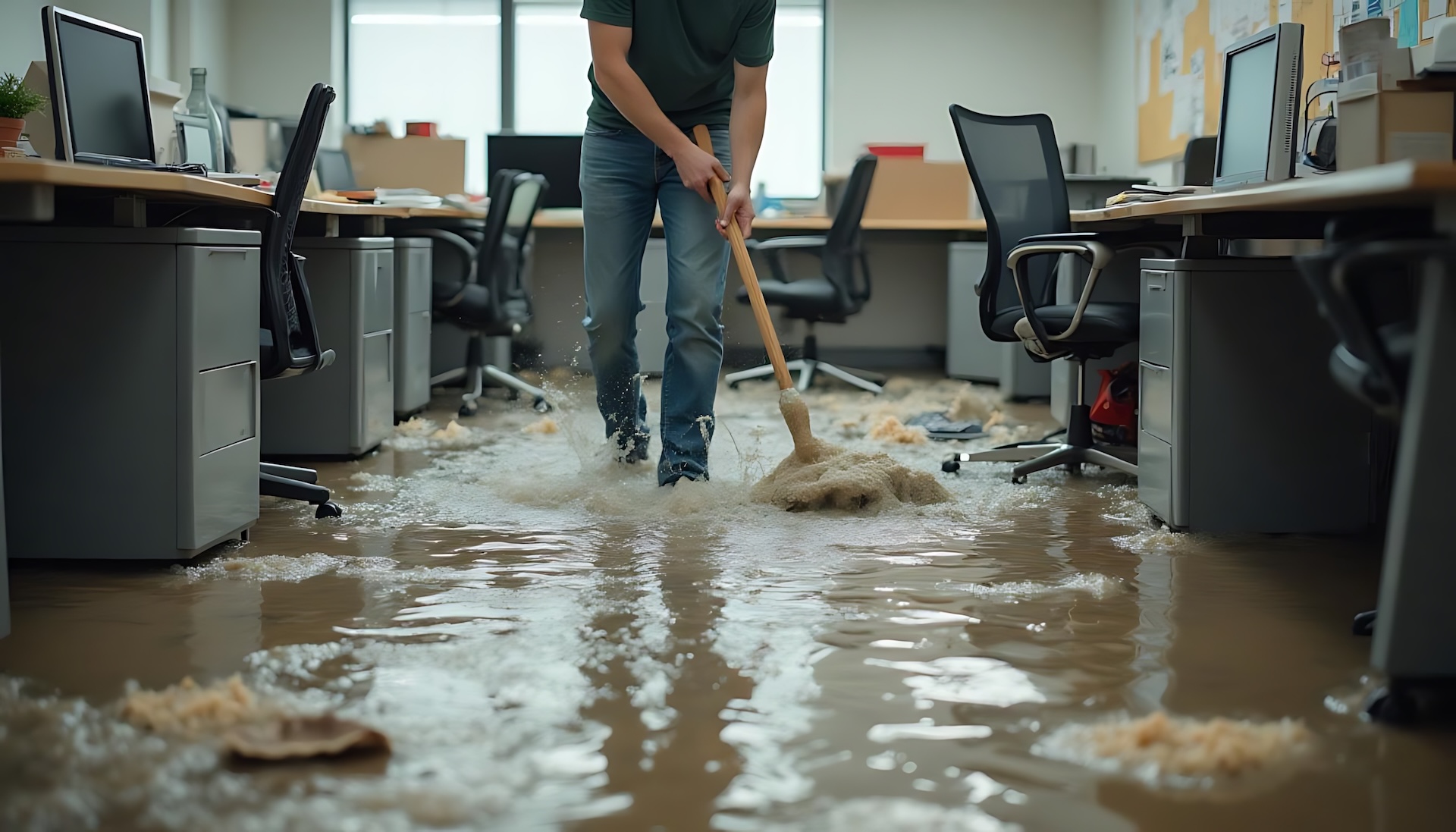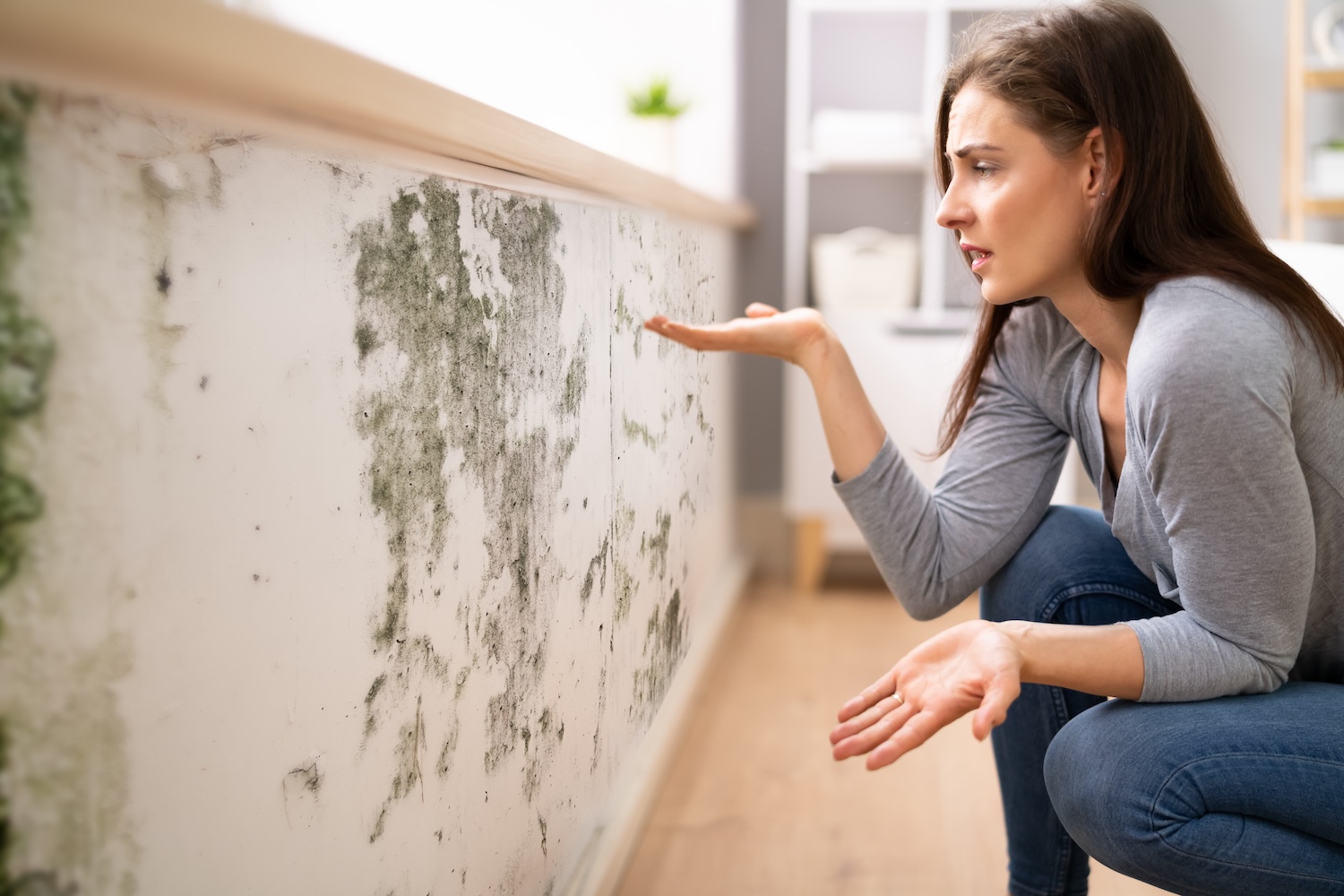Water leaking through the ceiling is a serious issue that requires immediate attention. Identifying the ceiling water leaks causes and addressing them quickly can minimize the damage and repair costs. Whether it is due to damaged pipes or roof issues, knowing how to stop a ceiling leak and taking preventive measures is essential. Learn how to identify, manage, and repair ceiling leaks while protecting your home from long-term damage.
Main Signs of a Leaky Ceiling
With ceiling water damage, not all signs are obvious. While water dripping from the ceiling is a clear indicator, there are other early warning signals to watch for. Spotting these signs as early as possible can help you address the problem before it gets worse:
- Bubbling or flaking ceiling paint. Excess moisture causes the paint on your ceiling to bubble, peel, or flake. This happens as water seeps into the paint layer and weakens the bond with the ceiling material.
- Dark stains on ceiling tiles. Brownish, yellowish, or gray stains on your ceiling are common signs of a ceiling water leak. This means water has been pooling in one area, slowly seeping through.
- Ceiling sagging or bowing due to water. A ceiling that sags or bows under pressure is a serious warning sign. This happens when water collects above the ceiling, adding weight and causing structural stress.
- Musty or moldy scent. A persistent musty odor often signals mold growth. Moisture from a leak creates the perfect environment for mold to thrive.
- Visible mold and mildew on the ceiling. If you notice mold spots near the top of your walls or directly on the ceiling, it may be due to a leak behind the walls. Mold and mildew growing on your wall’s surface aren’t just symptoms of a leak; they also represent a health risk that should be addressed quickly.
- Hairline cracks or shrinkage at the top of your walls. Small cracks or splits in your ceiling or walls can be caused by leaking water. When exposed to water for long periods, the drywall, stucco, or other materials forming your house’s walls can weaken, increasing the risk of a structural failure. Over time, and if not addressed, these cracks can deepen, potentially damaging your walls and increasing the risk of structural failure.
Steps to Follow After Spotting a Leaky Ceiling
Discovering a leak can be stressful, but knowing what to do about a ceiling leak can help minimize the damage. Follow these steps to address the issue quickly and safely:
- Turn off the main water supply. If you suspect a burst pipe or a plumbing issue, shut off your home’s main water supply. This will stop water from flowing and reduce further damage.
- Push furniture away from the affected ceiling. Move furniture, rugs, and other valuables away from the area to prevent water damage. Cover items with plastic sheeting for protection.
- Catch falling water. If water is visibly leaking from the ceiling, place buckets or large containers underneath to collect water dripping from the ceiling. This will help keep the floor dry and reduce the spread of damage.
- Contact local professionals. A plumber has the qualifications to address the source of a leak, such as fixing a leaky or damaged pipe. Also, contact a restoration expert if the water has already damaged your property. They can assess the extent of the problem, repair ceiling water damage, remove mold and mildew, and address all other forms of damage.
How Water Can Leak Through Ceilings
Fixing the damage is just one step in addressing a ceiling water leak. It’s equally important to identify how the leak originated, identify the cause, and resolve it promptly to prevent future issues. Some ways water leaking through your ceiling can cause problems:
Damaged Pipes Above the Ceiling
Leaking or burst pipes are among the most common causes of ceiling leaks. Pipes running through your walls or attic can develop cracks due to age, freezing temperatures, or high water pressure. When this happens, water seeps into the surrounding area, eventually leaking through your ceiling.
Signs include wet spots underneath water lines, a sudden drop in water pressure, or pooled water in specific areas. To address this, shut off the water supply immediately, call a plumber to fix the pipe, and contact a property restoration expert for emergency water damage repairs.
Clogged Gutters
Gutters direct rainwater away from your home. However, water can overflow and seep into your roof when it gets clogged with leaves, debris, or dirt. Over time, this water can leak through the ceiling. Look for water stains near ceiling edges, damp patches on exterior walls, or overflowing gutters during rainstorms.
Address the issue by regularly cleaning your gutters, installing guards to minimize debris buildup, and inspecting for any cracks or sagging areas that may need repair.
Leaking or Damaged Bathroom Fixtures
If the leak occurs beneath a bathroom, damaged fixtures like toilets, bathtubs, or sinks might be to blame. Loose connections, cracked seals, or worn-out caulking can allow water to escape and leak into the ceiling below.
Some common signs of bathroom leaks include water stains, a musty smell near the ceiling, or dripping sounds when bathroom fixtures are in use. Inspect fixtures for leaks, replace old caulking and seals, and hire a plumber to repair damaged pipes or connections.
Roof Damage
Roof leaks are a major cause of ceiling water damage. Storms, fallen debris, or aging shingles can create cracks or holes in your roof, allowing rainwater to enter. You may notice water stains on the ceiling after heavy rain, missing or damaged shingles, or damp insulation in the attic.
To resolve this, check your roof for visible damage, repair or replace broken shingles, and call a roofing professional for a full inspection and repair.
Why You Should Call Property Restoration Experts
After calling a plumbing professional to locate and fix the source of the leak, you must assess the damage to your property. If your home has been exposed to leaks for a long time, there may still be many risks to your health or your property’s structural integrity.
A property restoration expert’s role is to inspect your home, document the full scope of the leak and water damage, and make all necessary repairs to restore it to its original condition. They offer comprehensive water damage restoration services, including:
- Water extraction and removal. Restoration experts remove standing water using industrial-grade pumps and vacuums to prevent it from spreading further and causing additional structural issues.
- Drying and dehumidification. High-powered fans and dehumidifiers thoroughly dry out ceilings, walls, and flooring. This step is critical to prevent moisture from lingering and creating an environment for mold and mildew.
- Damage assessment and repairs. Restoration specialists inspect the full extent of the damage and repair everything from soaked drywall and sagging ceilings to weakened structures. They have the tools and experience to restore your home to its original condition.
- Mold remediation and prevention. Mold growth can begin within 24-48 hours after a leak. Restoration professionals sanitize affected areas, remove mold if it has started, and treat surfaces to prevent future outbreaks.
- Insurance claim support. Restoration experts often assist in documenting the damage for your insurance claim. Their detailed reports and photos help you get the compensation needed for repairs.
Safeguard Your Home from Ceiling Leaks
Ceiling leaks can cause major damage if not addressed promptly. Understanding the causes and taking steps to prevent ceiling leaks can save you time and money. For comprehensive solutions, call Paul Davis. Our team of professionals provides emergency water damage repair to restore your home quickly and efficiently. Don’t wait for the damage to worsen—contact Paul Davis today and protect your home.







